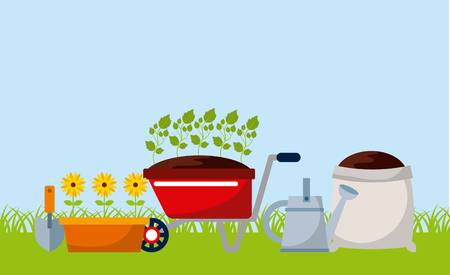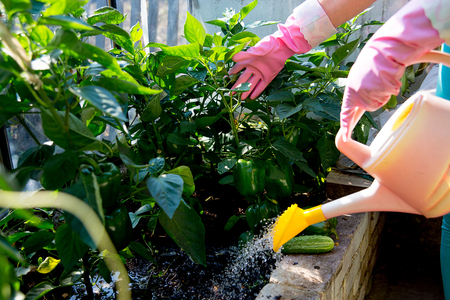1. Understanding Edible Landscaping
Edible landscaping is all about blending beauty and function in your garden. Instead of separating your vegetable garden from your flower beds, this approach encourages you to grow edible plants right alongside your ornamental ones. It’s a great way to make the most of your space while adding both color and flavor to your yard.
What Is Edible Landscaping?
Edible landscaping means designing your outdoor space with plants that are both attractive and edible. Think blueberries instead of boxwoods, or colorful Swiss chard mixed with marigolds. You’re not sacrificing looks—you’re just making every plant count.
Why Choose Edible Landscaping?
This approach to gardening comes with several benefits that go beyond just growing food:
| Benefit | Description |
|---|---|
| Sustainability | Reduces the need for store-bought produce and lowers your carbon footprint. |
| Food Access | Gives you quick access to fresh fruits, veggies, and herbs right in your yard. |
| Maximizing Space | Makes full use of small yards or limited garden areas by combining aesthetics and edibles. |
| Cost Savings | Cuts down on grocery bills over time by producing your own food. |
Aesthetic Appeal Meets Practicality
You don’t have to give up beauty to grow food. Many edible plants offer stunning textures, colors, and forms. For example, rainbow chard adds vibrant hues, while rosemary provides evergreen structure and fragrance. With thoughtful placement, edible plants can enhance the look of your landscape just as much as traditional ornamentals.
Examples of Dual-Purpose Plants
- Kale: Rich green foliage that looks great in borders and is perfect for salads or soups.
- Strawberries: Low-growing groundcover with sweet rewards.
- Lavender: Beautiful purple flowers that also work well in teas and baked goods.
- Basil: Aromatic herb that fills out containers and garden beds nicely.
Getting Started
If youre new to edible landscaping, start small. Add a few herbs to your flower beds or replace one ornamental shrub with a fruit-bearing bush. As you gain confidence, you can expand and experiment with more combinations that suit your climate and taste preferences.
This approach not only transforms how your yard looks—it changes how you connect with it. From picking fresh basil for dinner to watching bees visit your blooming thyme, edible landscaping brings daily joy and purpose to your outdoor space.
2. Assessing Your Existing Landscape
Before adding edible plants to your ornamental garden, its important to take a good look at what you already have. By evaluating key elements like sunlight, soil quality, design style, and available space, you can find the best spots to introduce edible plants without compromising your gardens beauty.
Sunlight
Most edible plants—like tomatoes, peppers, and herbs—thrive in full sun. Walk around your yard during the day and take note of how much sunlight different areas receive. Keep in mind that “full sun” means at least 6 hours of direct sunlight per day. Areas with partial sun can still support leafy greens or root veggies like carrots and beets.
Sunlight Guide for Edible Plants
| Sun Exposure | Suitable Edible Plants |
|---|---|
| Full Sun (6+ hrs) | Tomatoes, Peppers, Basil, Strawberries |
| Partial Sun (4–6 hrs) | Lettuce, Kale, Carrots, Chard |
| Shade (Less than 4 hrs) | Mints, Parsley, Spinach (limited yield) |
Soil Quality
Healthy soil is essential for growing both ornamentals and edibles. Check if your soil is loamy and well-draining. If your existing garden beds are heavily mulched or use decorative rocks, you may need to amend the soil or create raised beds for edibles. You can buy a simple soil testing kit online or from a local garden center to check pH levels and nutrient content.
Design Style
Your garden likely has a certain look or theme—maybe it’s formal with neat hedges or more relaxed with flowing flower beds. Choose edible plants that match your existing style. For example, purple basil can blend beautifully into a bed of petunias, while rainbow chard adds vibrant color to a mixed border.
Tips for Matching Design Styles:
- Cottage Garden: Mix herbs like thyme and oregano with flowers like daisies and echinacea.
- Modern/Minimalist: Use structured edible plants like rosemary or dwarf kale in clean lines.
- Tropical Look: Incorporate colorful peppers or sweet potatoes with bold leaves.
Available Space
Look for underused spaces where you can sneak in edibles—edges of flower beds, containers on patios, or gaps between shrubs. Vertical space also offers great opportunities: trellises can support climbing beans or cucumbers without taking up much ground area.
Ideas for Using Small Spaces:
- Add strawberries as ground cover around taller ornamentals.
- Plant herbs along walkways or borders.
- Use hanging baskets for trailing cherry tomatoes or nasturtiums (which are edible too!).
By carefully assessing these four areas—sunlight, soil, style, and space—you’ll be better prepared to integrate edible plants that not only grow well but also enhance the look of your ornamental landscape.

3. Choosing the Right Edible Plants
When adding edible plants to your ornamental landscape, its important to choose varieties that not only grow well in your climate but also blend visually with your existing garden design. Selecting the right plants means considering USDA Hardiness Zones, plant height and spread, seasonal interest, and how each edible complements nearby ornamentals.
Know Your USDA Hardiness Zone
The USDA Hardiness Zone Map is a great tool for determining which edible plants will thrive in your region. Before purchasing any plants, check your zone and make sure you’re selecting varieties suited to your local climate. This helps avoid plant stress and ensures better harvests.
Example of Edible Plants by USDA Zone
| USDA Zone | Recommended Edibles |
|---|---|
| Zone 3–5 | Kale, rhubarb, chives, serviceberries |
| Zone 6–7 | Lettuce, blueberries, thyme, figs (cold-hardy types) |
| Zone 8–10 | Lemons, rosemary, peppers, artichokes |
Select Plants That Complement Ornamentals
Your edible choices should enhance the visual appeal of your landscape. Look for plants with interesting foliage, colorful fruits or flowers, or unique textures. For example, purple basil can pair beautifully with lavender or ornamental grasses. Kale and Swiss chard offer bold leaf colors that contrast nicely with flowering perennials.
Tips for Visual Integration
- Color: Choose edibles with foliage or fruit that match or contrast attractively with existing ornamentals.
- Height: Use taller edibles like okra or corn as backdrops; low-growing herbs like thyme make excellent borders.
- Texture: Mix leafy vegetables with fine-textured ornamentals for visual balance.
Add Seasonal Interest with Edibles
A well-planned edible landscape provides color and variety throughout the year. Some plants bloom early in spring, while others produce fruit in summer or have vibrant fall foliage. Mixing these types into your ornamental beds keeps things looking fresh across the seasons.
Seasonal Highlights from Edible Plants
| Season | Edible Plants with Visual Appeal |
|---|---|
| Spring | Lettuce (variegated leaves), chives (purple flowers), strawberries (white blooms) |
| Summer | Basil (green or purple leaves), tomatoes (bright fruits), zucchini (large yellow flowers) |
| Fall | Kale (deep green and purple tones), pumpkins (vines and fruit), chili peppers (red fruits) |
Selecting the right edible plants for your ornamental garden doesn’t just add beauty—it also adds function. With a little planning based on climate, aesthetics, and seasonality, you can enjoy a landscape that’s both delicious and delightful to look at.
4. Design Tips for a Cohesive Look
Blending edible plants into your ornamental landscape can be both practical and beautiful when done with a little planning. Here are some easy-to-follow design tips that will help you create a seamless look between your vegetables, herbs, and traditional garden plants.
Layering for Depth and Interest
Use the concept of vertical layering to give your garden depth. Just like in ornamental landscaping, you can arrange plants in layers — tall, medium, and low-growing — to create visual interest. For example, place fruit trees or tall tomatoes at the back, followed by medium-height peppers or kale, and edge your beds with low-growing herbs like thyme or oregano.
Example Layering Layout
| Height | Ornamental Plants | Edible Plants |
|---|---|---|
| Tall (Back) | Sunflowers, Ornamental Grasses | Fruit Trees, Corn, Tomatoes |
| Medium (Middle) | Roses, Lavender | Peppers, Kale, Eggplant |
| Low (Front/Edge) | Dwarf Marigolds, Creeping Jenny | Basil, Thyme, Lettuce |
Color Coordination Matters
Choose edibles that either complement or contrast nicely with your existing ornamentals. For instance, the deep purple of eggplant pairs well with silvery lambs ear or bright yellow marigolds. Red Swiss chard looks stunning next to blue salvia or dusty miller. Think about leaf color as well as blooms — many edibles have attractive foliage!
Quick Color Pairing Ideas:
- Purple Basil + Yellow Coreopsis: Bold and sunny combo
- Rainbow Chard + Blue Salvia: Vibrant contrast with texture variety
- Lettuce Mix + Pansies: Subtle tones with seasonal charm
Use Edibles as Focal Points or Edging Plants
Certain edible plants can serve as beautiful focal points in your garden beds. Artichokes, for example, have a dramatic structure and silvery leaves that stand out. Rhubarb and red mustard greens also make striking centerpieces. At the same time, herbs like parsley, mint (in containers), and creeping thyme work wonderfully as edging plants along paths or borders.
Suggested Edible Uses:
| Function | Recommended Edibles |
|---|---|
| Focal Point | Artichoke, Rhubarb, Red Mustard Greens |
| Edging Plant | Creeping Thyme, Parsley, Chives |
With a bit of creativity and planning, you can design a yard thats not only eye-catching but also edible! These simple strategies make it easy to blend form and function for a truly unique home landscape.
5. Maintenance and Seasonal Care
Once youve successfully blended edible plants into your ornamental landscape, keeping everything healthy and attractive year-round takes a bit of planning. Edibles have different care needs than traditional ornamentals, so its important to understand how to manage both types together without compromising beauty or productivity.
Pruning: Balancing Form and Function
Regular pruning helps maintain the shape of ornamental shrubs and trees while also promoting better yields in fruiting plants. For example, blueberry bushes can be pruned to stay compact and neat, fitting in well with more formal garden designs. Always remove dead or diseased branches and shape edible plants to match the surrounding landscape aesthetics.
Fertilizing Strategies
Edible plants often need more nutrients than ornamentals, especially during their growing season. Use organic fertilizers or compost to enrich the soil naturally. Be mindful not to over-fertilize, which can lead to excessive foliage growth at the expense of fruits or flowers.
Recommended Fertilizer Timing
| Plant Type | Fertilizer Type | Application Time |
|---|---|---|
| Leafy Greens (e.g., kale, lettuce) | Nitrogen-rich fertilizer | Every 2–4 weeks during growing season |
| Fruit-bearing Plants (e.g., tomatoes, peppers) | Balanced NPK or compost tea | Start at planting, then monthly until fruit sets |
| Berries (e.g., blueberries, strawberries) | Acid-loving plant food (for blueberries), balanced for others | Early spring and after harvesting |
Pest Control Without Compromising Beauty
Pests can be a challenge when mixing edibles with ornamentals. Integrated Pest Management (IPM) is your best approach—this includes using beneficial insects like ladybugs, applying neem oil or insecticidal soap, and removing affected leaves by hand. Choose methods that are safe for both edible crops and ornamental plants.
Crop Rotation in a Mixed Garden
If you’re planting annual edibles like tomatoes or beans within flower beds, consider rotating them each year to prevent soil-borne diseases and nutrient depletion. Even in small spaces, alternating between leafy greens one year and root vegetables the next can make a difference.
Maintaining Year-Round Visual Appeal
To keep your garden attractive across seasons:
- Select evergreen ornamentals: These provide structure during winter months.
- Add seasonal color: Plant edible flowers like nasturtiums in summer or colorful chard in fall.
- Use mulch creatively: Straw or bark mulch not only conserves moisture but also gives a tidy look.
- Plan for succession planting: Replace harvested crops with new ones to fill empty spots.
A well-maintained edible-ornamental landscape doesn’t just look good—it also provides fresh produce throughout the year. With a little attention to seasonal care and maintenance practices, your garden can thrive both visually and functionally.


